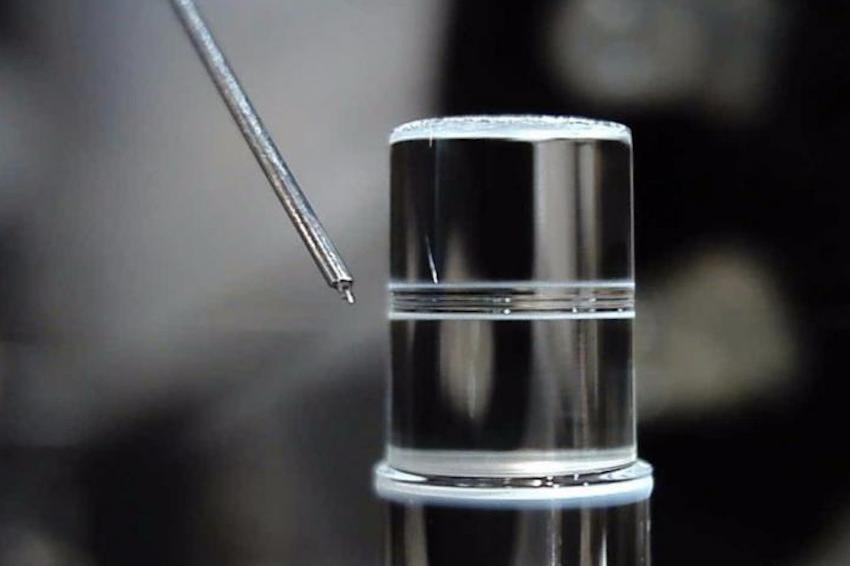Trapping light without back reflections
21.01.2021 - A new technique for a better signal quality for sensing and information technology.
Microresonators are small glass structures in which light can circulate and build up in intensity. Due to material imperfections, some amount of light is reflected backwards, which is disturbing their function. Researchers have now demonstrated a method for suppressing these unwanted back reflections. Their findings can help improve a multitude of microresonator-based applications from measurement technology such as sensors used for example in drones, to optical information processing in fibre networks and computers. The method is developed by a team spanning the Max Planck Institute for the Science of Light (Germany), Imperial College London, and the National Physical Laboratory (UK).
Researchers and engineers are discovering many uses and applications for optical microresonators, a type of device often referred to as a light trap. One limitation of these devices is that they have some amount of back reflection, or backscattering, of light due to material and surface imperfections. The back reflected light negatively impacts of the usefulness of the tiny glass structures. To reduce the unwanted backscattering, the British and German scientists were inspired by noise cancelling headphones, but rather using optical than acoustic interference. “In these headphones, out-of-phase sound is played to cancel out undesirable background noise,” says Andreas Svela from the Quantum Measurement Lab at Imperial College London. “In our case, we are introducing out-of-phase light to cancel out the back reflected light,” Svela continues.
To generate the out-of-phase light, the researchers position a sharp metal tip close to the microresonator surface. Just like the intrinsic imperfections, the tip also causes light to scatter backwards, but there is an important difference: The phase of the reflected light can be chosen by controlling the position of the tip. With this control, the added backscattered light's phase can be set so it annihilates the intrinsic back reflected light – the researchers produce darkness from light. “It is an unintuitive result, by introducing an additional scatterer, we can reduce the total backscattering,” says Pascal Del'Haye at the Max Planck Institute for the Science of Light. The results show a record suppression of more than 30 decibels compared to the intrinsic back reflections. In other words, the unwanted light is less than a thousandth of what it was prior to applying the method.
“These findings are exciting as the technique can be applied to a wide range of existing and future microresonator technologies,” comments Michael Vanner from the Quantum Measurement Lab at Imperial College London. For example, the method can be used to improve gyroscopes, sensors that for instance help drones navigate; or to improve portable optical spectroscopy systems, opening for scenarios like built-in sensors in smartphones for detection of dangerous gasses or helping check the quality of groceries. Furthermore, optical components and networks with better signal quality allows us to transport more information even faster. (Source: ICL)
Links: Microphotonics, National Physical Laboratory, Teddington, UK • Microphotonics, Max Planck Institute for the Science of Light, Erlangen, Germany • Quantum Measurement Lab, Imperial College London, London, UK







